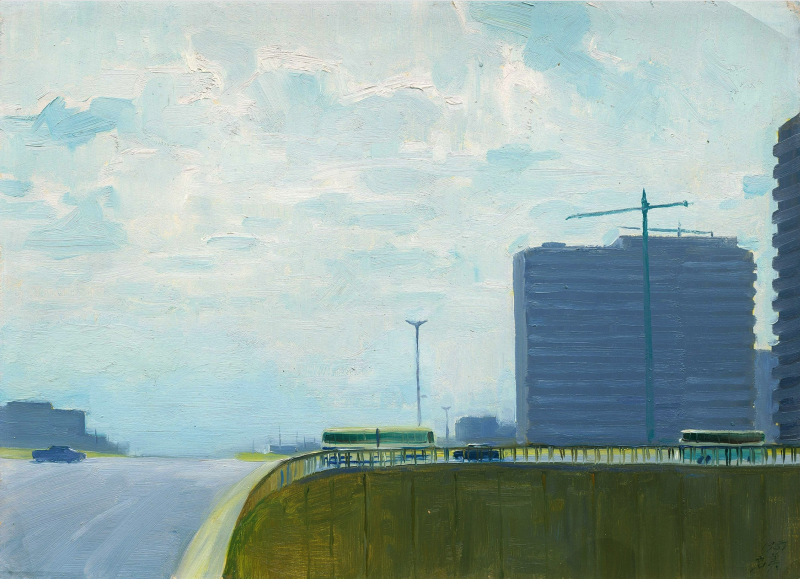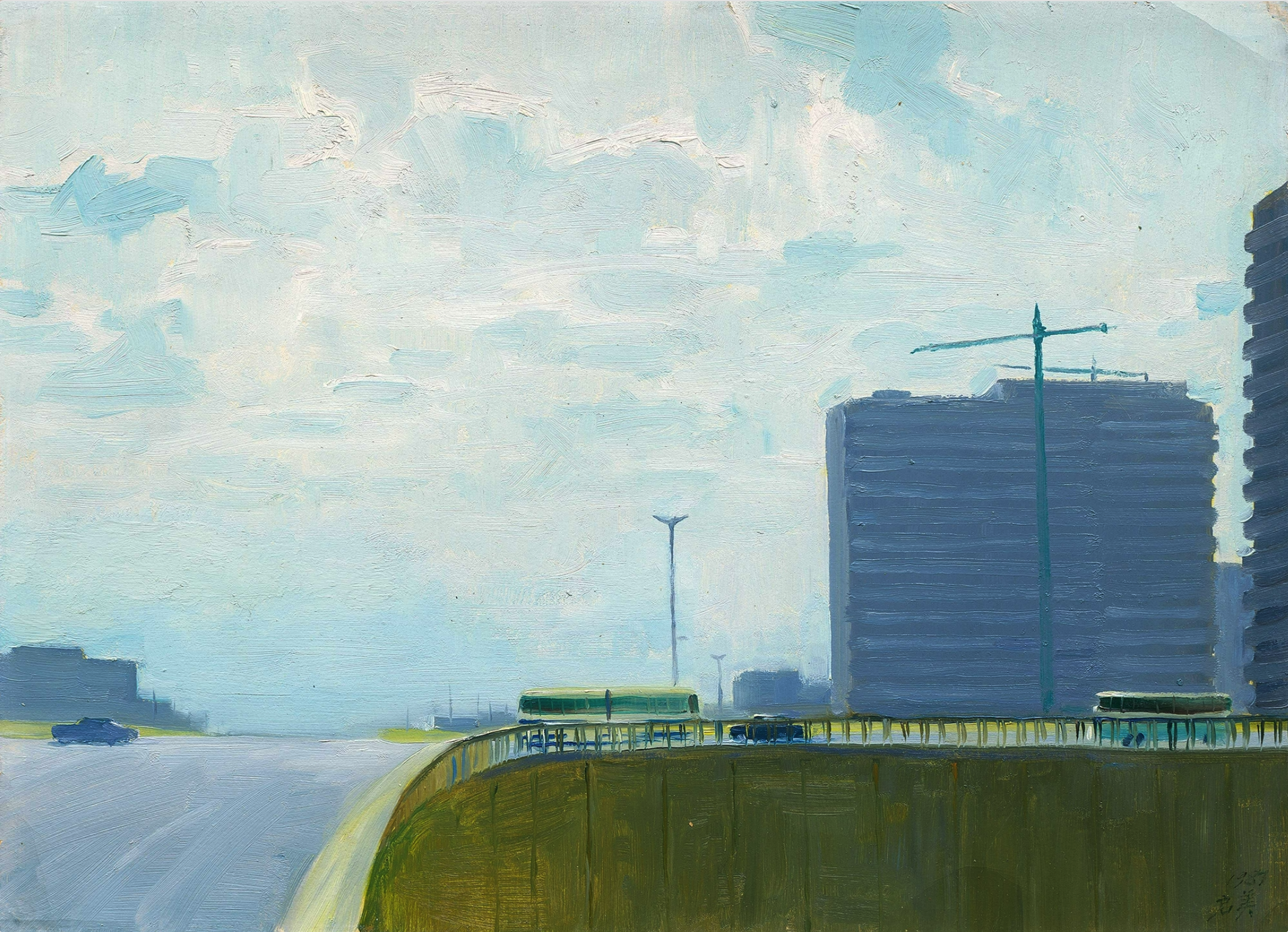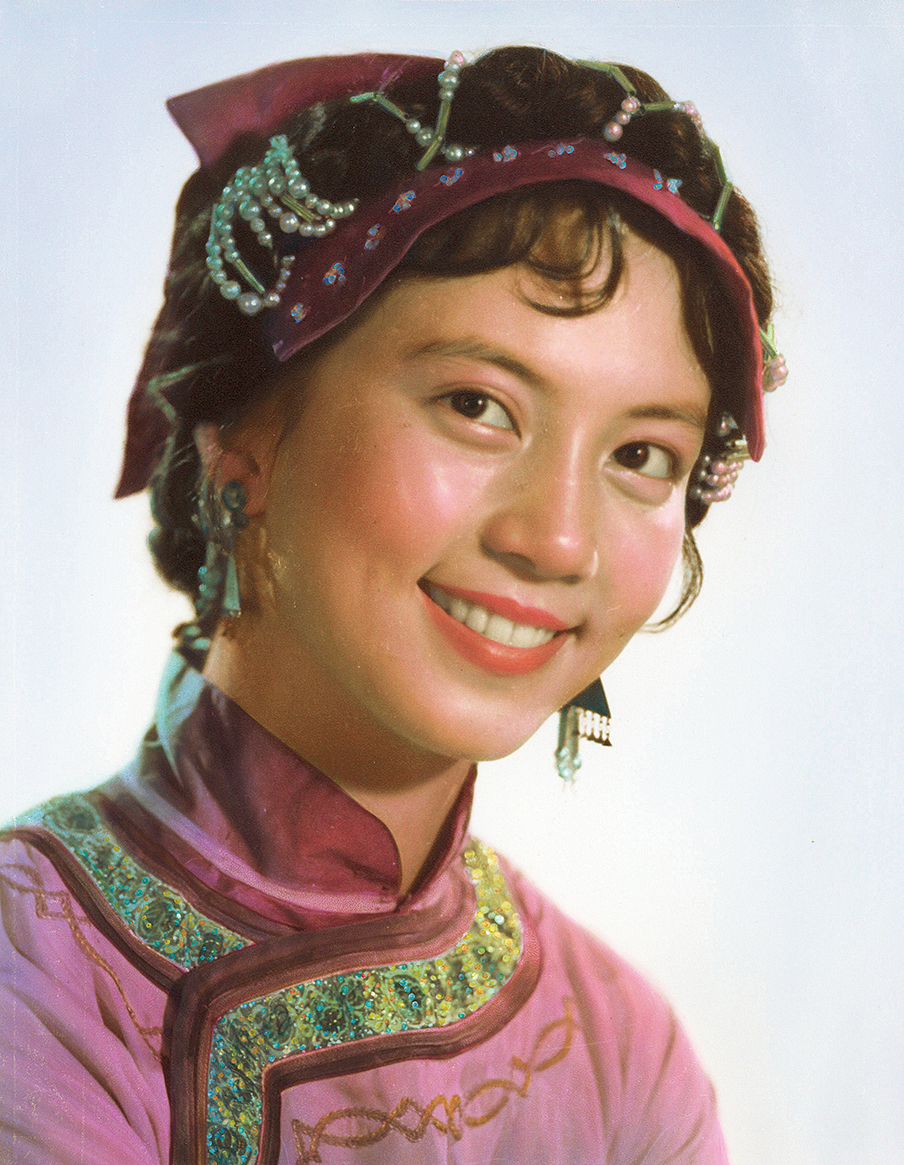
Wei Qimei
Morning in the City
1987
Oil on Canvas
Wei Qimei (1923–2009), a native of Anqing, Anhui, was a significant figure in the history of modern Chinese art, known as a painter, cartoonist, and art educator. A student of renowned masters such as Xu Beihong, he taught for many years at the Central Academy of Fine Arts (CAFA), with a creative career spanning various historical phases of New China. During the 1950s to 1970s, Wei primarily focused on realist subjects. However, in the 1980s, amid the rise of the ’85 New Wave, this senior-generation painter did not confine himself to past conventions. Instead, he chose to engage with the new era on his own terms. In his sixties, he embraced artistic innovation, shifting his focus toward themes of modernized urban landscapes and technological development—marking a modern transition in his personal artistic style.
Morning in the City depicts an urban construction scene at the break of day. The sky is slightly overcast, and in the distance, several high-rise buildings are under construction, with an old-fashioned crane busily operating beside them. On the road, several buses and cars move in opposite directions, signaling the start of a new day in the city. The composition is simple, with a low horizon line and a vast expanse of sky above. Wei Qimei employs crisp lines and structured forms to render the roads and buildings with geometric clarity, creating a sense of orderly beauty. While the overall colour palette leans toward gray, the scene does not feel oppressive. Instead, the soft morning light filtering through the mist imbues the cityscape with a sense of tranquility and vitality. Through this painting, we can almost sense the morning atmosphere of a major city in the 1980s—both the bustling energy of construction and the quiet poetry of the early hours. Wei Qimei captures the rapid urban development of the time with a straightforward composition, depicting the new cityscape emerging in China. With his refined realism, he outlines the contours of a modern metropolis while infusing the scene with a subtle sense of poetry, revealing the beauty of industrial progress.



